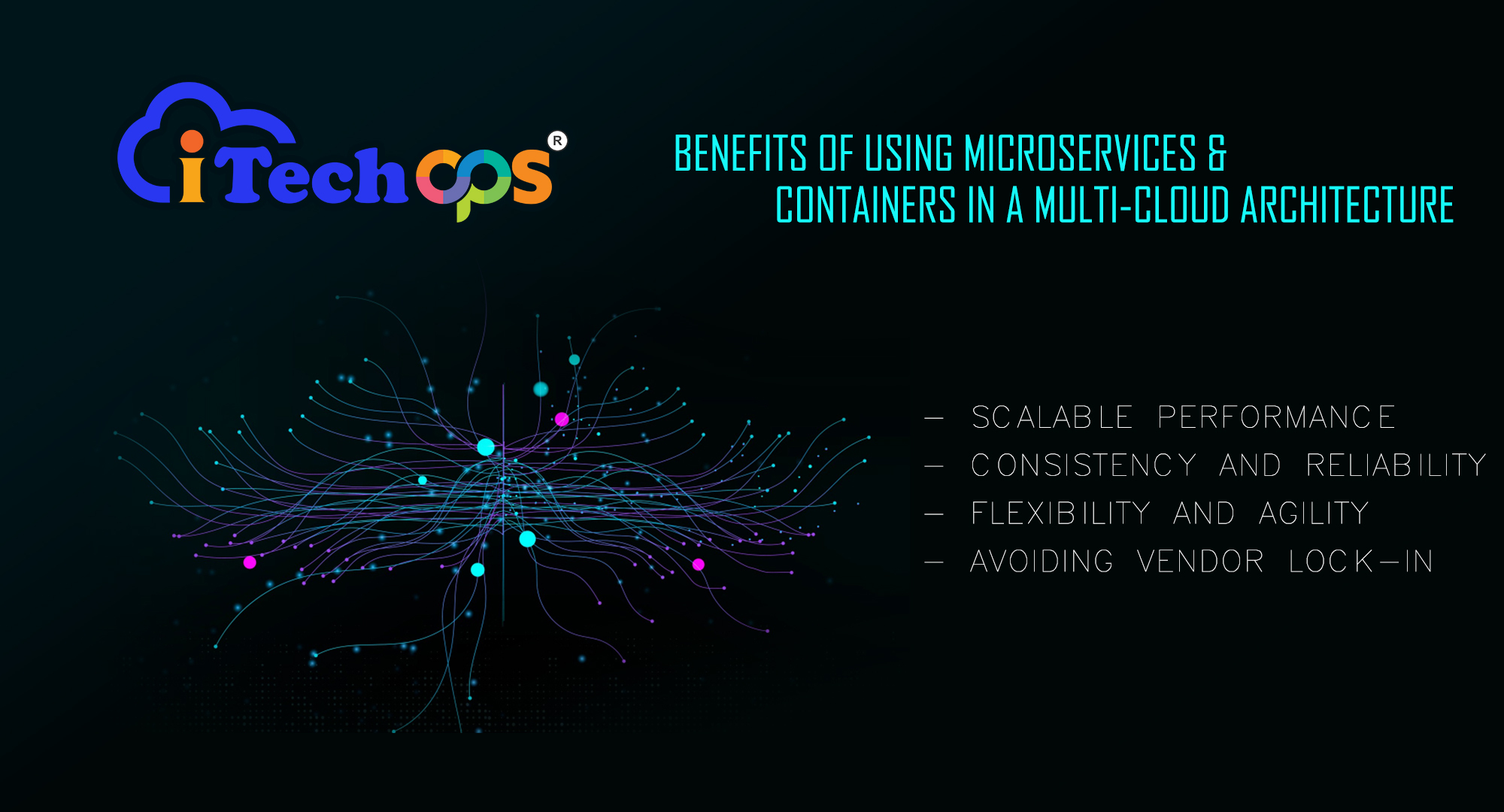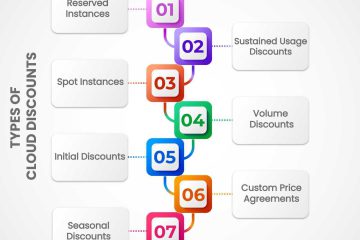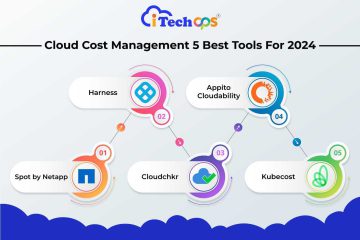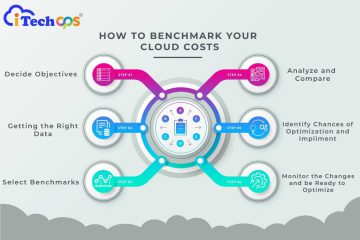Microservices and Containers in Multi-Cloud Architecture

Are cloud techs worth the investment? This question was way too common 5-10 years back. But now, it is a necessity in multi-cloud architecture. Microservices and containers are crucial techs today to build and deploy native cloud apps. Let me first explain the difference between the two, and then you can understand their importance.
Microservices are a development approach that breaks apps into small and independent services. At the same time, containers are a lighter approach to packing and sending software apps. Together, they can build and send highly scalable and portable apps. Isn’t it interesting?
Have you ever wondered how these elements blend to enhance the cloud computing experience? Or why they have become essential in the world of cloud technology? Join me as we delve into the difficulties of microservices and containers in multi-cloud architectures.
Breaking Down The Difference
Microservices and containers help divide software/apps into small, separate pieces. These pieces can work independently and result in better multi-cloud service management.
Microservices are a way of breaking bigger apps into fragments. These smaller programs are called services. Each microservice handles one specific feature. For example, a shopping app might have an individual service for the shopping cart and payments. These services are “loosely coupled”. This means they run on their own but can communicate with each other if needed using APIs.
Containers package microservices, libraries, and settings for developers to run them anywhere. They isolate services from each other on a server. This adds extra separation between parts of an application.
Together, microservices and containers make software faster and easier to improve. Developers can even add new features to specific services without changing everything. If issues arise or more capacity is necessary, the service needs to scale up without affecting others.
So, microservices split the software into isolated yet connected pieces. Containers deploy those pieces as portable and self-sufficient units. This speeds up development while making applications highly scalable and resilient.
Difference between Microservices and Containers in Multi-Cloud Architecture
| Basis for Comparison | Microservices in Cloud Architecture | Containers in Cloud Architecture |
| Key Concept | Breaking one large app into small services | Deploy and manage apps |
| Focus Area | Build scalable and efficient apps | Deploying the microservice apps |
| Type | Architectural style | Technology for deploying apps |
| Drivers for adoption | Agility, flexible scaling, faster release cycles | Portability, version consistency, environmental isolation |
| Learning curve | High | Low |
| Main challenges | Much more complex deployment, operations and testing | Some security concerns, integration issues with non-cloud native apps |
Best Practices of Microservices and Containers in Multi-Cloud Architecture
- Split large monolithic systems into smaller, independent microservices. Do this according to their specific business functions.
- Make APIs consistent for microservices to work together.
- Use containers for consistent packaging and easy portability.
- Automate provisioning, deployment, and monitoring workflows.
- Add security controls for communication between microservices.
- Use CI/CD pipelines to update quickly and reliably.
- Create simple microservices that you can replicate for scalability.
- You can store data in cloud databases that keep track of its state.
- Include health checks and failure handling for each microservice.
- Log, measure, and track data in one central location.
- Thorough test integrations and infrastructure changes.
- Put in place policy-based governance in all environments.
- Ensure teams and tools follow the same standards and use the same platforms.
Benefits of using microservices and containers in a multi-cloud architecture
Adopting a multi-cloud service management strategy provides businesses with greater flexibility and control. Integrating microservices and containers unlocks four major advantages for multi-cloud environments:
Scalable Performance
Microservices break large applications into smaller pieces called services. For example, a video streaming app may have services for video playback, payment, chat, etc.
Adding more copies of this microservice can help handle increased users. This is known as scaling out the service. Microservices make it fast to scale specific components only.
Containers package code, libraries, and settings for microservices. These containers make it easy to deploy multiple copies of the video microservice on servers to handle the increase in demand.
One can remove the extra copies after the spike. Thanks to the lightweight nature of containers.
Consistency and Reliability
Containers hold microservices and everything needed to run them. Standardization makes it easier to update different cloud platforms. It separates problems into separate microservices, preventing entire site crashes.
Flexibility and agility
Microservices are separate from the infrastructure. This architecture allows you to use the best services from different providers. Data analytics can use Google Cloud, while web apps can use Azure.
Avoiding Vendor Lock-in
Relying on only one cloud vendor costs more and limits control. Using microservices and containers allows you to combine the best services from different cloud platforms. You can move workloads between different environments without being tied to a specific vendor.
Challenges of using microservices and containers in a multi-cloud architecture
Microservices and containers in multi-cloud architecture have advantages, but combining them is challenging. We’ll look at three big problems.
Deployment
Microservices environments consist of containerized services, not a single large program. Developers coordinate deployment workflows across clouds. Overhead costs increase because of a lack of standardized automation for scripting, testing, and tracking in distributed systems.
Managing security risks
Microservices communicate with each other and external apps and data sources using the network. Integration points can create cyber risks if not protected. Multi-cloud topologies that cross organizational boundaries increase these risks. Follow correct access control, data encryption, and container scanning methods to prevent gaps.
Observability in distributed systems.
Tracking user routes through many microservices in different clouds is hard. Teams have difficulty finding the main reasons for latency and failure in dynamic environments because of too much data. Fixing problems and improving things can be challenging.
Conclusion
When cloud-native approaches are expanding, microservices and containerization are becoming very important. These techs are driving innovation in multi-cloud architectures.
Microservices allow for flexible architectures and quick iterations that bring value. Containers are like delivery vehicles for applications. They make it easy to deploy and scale applications on different infrastructures. They ensure application investments are future-proof. This is done by balancing strength and flexibility with modular design and compatibility with cloud systems.
The new enterprise application reality will be built on a modern mesh of containerized microservices. These microservices will be computing workhorses and handling specialized functions. They will work together in a well-orchestrated symphony across clouds.



0 Comments